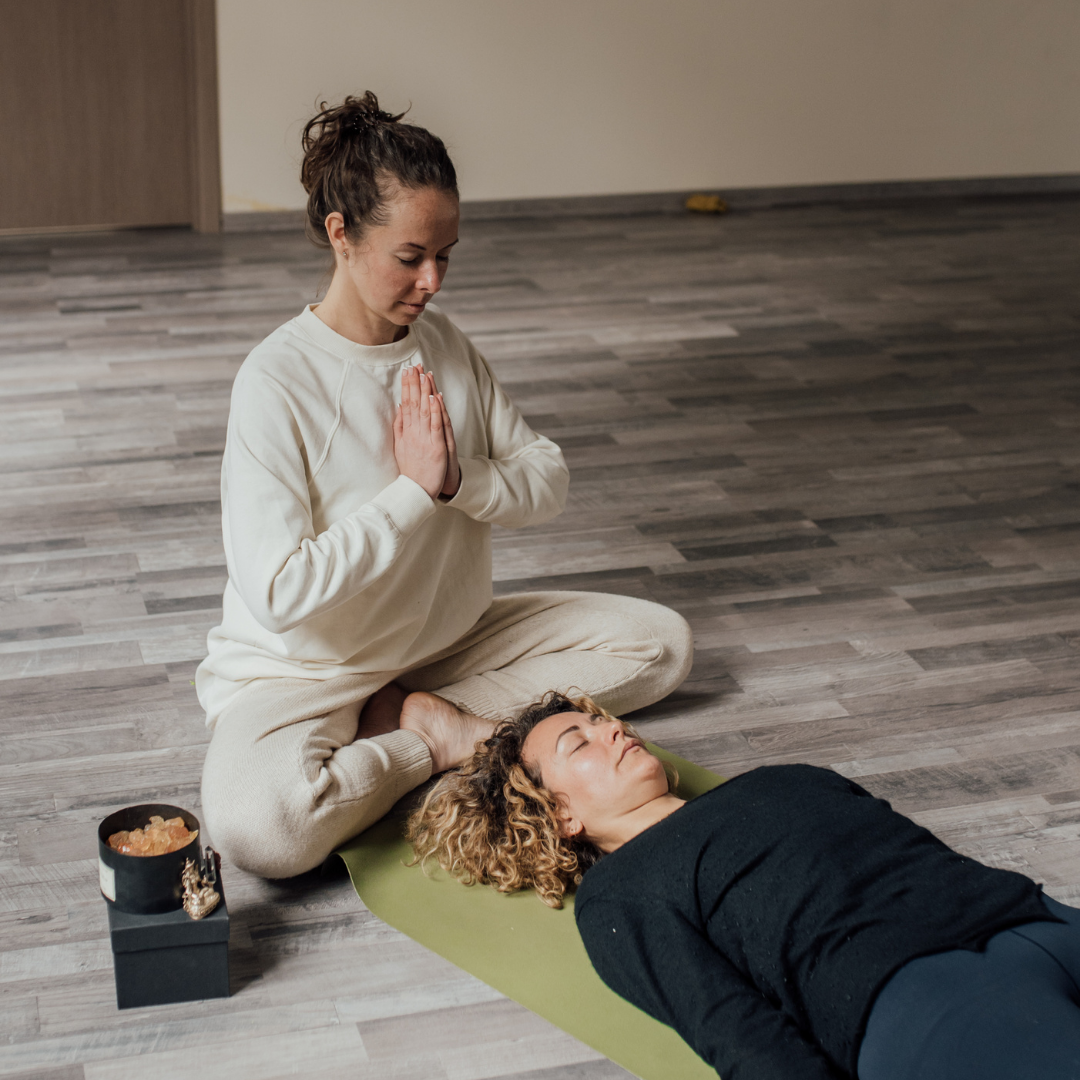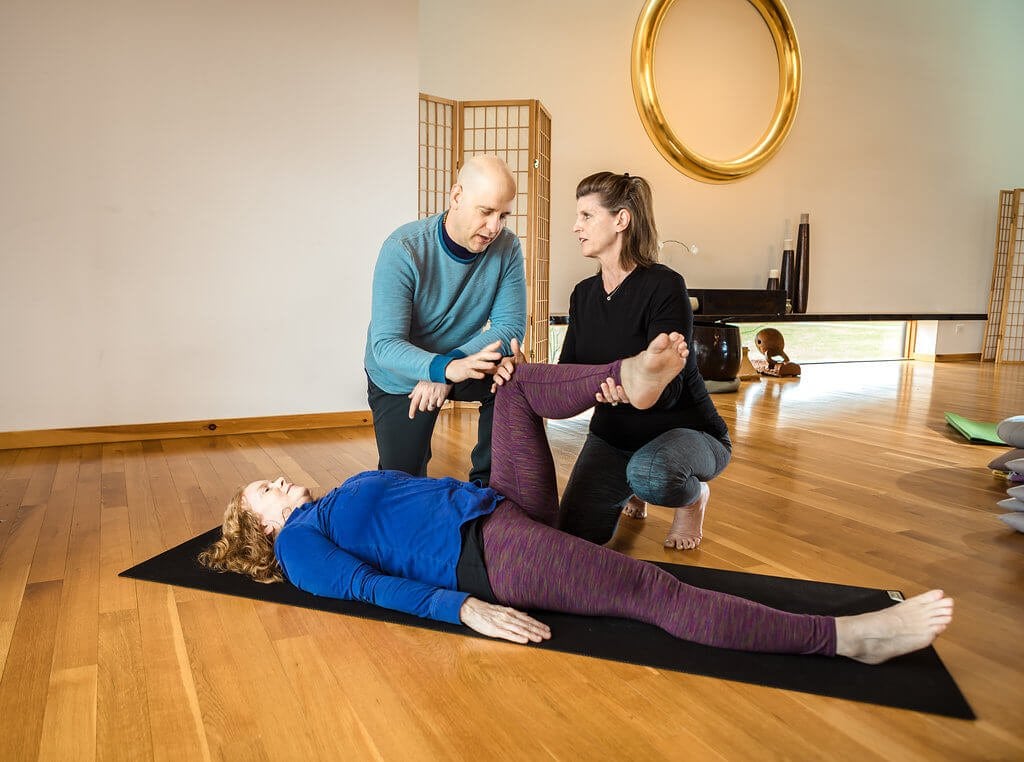I. Introduction

The field of yoga therapy has been steadily growing in recent years, as more individuals seek holistic healing and wellness. Yoga therapy utilizes the ancient practice of yoga to address physical, mental, and emotional imbalances. Its benefits are vast and can help individuals recover from injuries, manage chronic conditions, reduce stress, and improve overall well-being.
II. The Journey to Becoming a Yoga Therapist
A. Understanding the foundations of yoga
- Exploring the origins and philosophy of yoga
To become a skilled yoga therapist, it is important to have a deep understanding of the origins and philosophy of yoga. This involves studying ancient texts such as the Yoga Sutras of Patanjali, the Bhagavad Gita, and the Hatha Yoga Pradipika. These texts provide insight into the principles and techniques of yoga that can be used in therapy.
- Developing a personal yoga practice
Before embarking on the path of becoming a yoga therapist, it is essential to have a personal yoga practice. Practicing yoga regularly deepens your own understanding of the practice and helps you connect with the energy and benefits it offers. This personal experience will enrich your ability to guide others in their therapeutic journey.
B. Deepening knowledge through yoga teacher training

- Exploring accredited yoga teacher training programs
To become a yoga therapist, one must first complete a yoga teacher training program. It is important to research and choose an accredited program that meets your specific needs and interests. Look for schools that align with internationally recognized standards such as those set by Yoga Alliance or the International Association of Yoga Therapists.
- Acquiring skills in asana, pranayama, and meditation
In a yoga teacher training program, you will deepen your knowledge and skills in asana (physical postures), pranayama (breathing techniques), and meditation. These are the foundational practices of yoga therapy and enable you to guide others in their healing process.
C. Specialized training in yoga therapy
- Understanding the principles and techniques of yoga therapy
Once you have completed a yoga teacher training program, you can pursue specialized training in yoga therapy. This training focuses on understanding the principles and techniques of using yoga as a therapeutic tool. It explores how to tailor the practice to individuals with specific needs and conditions, such as back pain, anxiety, depression, or autoimmune diseases.
- Gaining knowledge in anatomy, physiology, and psychology
As a yoga therapist, it is important to have a basic understanding of anatomy, physiology, and psychology. This knowledge helps you understand how the body, mind, and emotions are interconnected and how yoga can effectively address imbalances in these areas. You may choose to pursue additional courses or certifications in these subjects to enhance your therapeutic skills.
III. Certification and Accreditation

A. Choosing a reputable yoga therapy school or organization
- Researching accreditation standards and affiliations
When choosing a yoga therapy school or organization, it is essential to research their accreditation standards and affiliations. Look for schools that have met rigorous standards set by reputable organizations such as the International Association of Yoga Therapists. This ensures that you will receive quality education and training.
- Considering the curriculum, faculty, and alumni network
Consider the curriculum offered by the yoga therapy school or organization. Look for a comprehensive program that covers a wide range of therapeutic techniques and approaches. Additionally, research the qualifications and experience of the faculty members, as well as the success and achievements of the school’s alumni.
B. Completing the required training hours and practical experience
- Meeting the minimum number of training hours
To become a certified yoga therapist, you must complete a minimum number of training hours as specified by the accrediting organization. These hours typically include in-person training, supervised clinical practice, and self-study. It is important to ensure that the program you choose meets these requirements.
- Engaging in supervised clinical practice and case studies
To gain practical experience as a yoga therapist, it is important to engage in supervised clinical practice and case studies. This allows you to apply the knowledge and skills you have acquired in a real-world setting. It also provides valuable insights and feedback from experienced practitioners, enhancing your growth and development as a therapist.
IV. Tools and Techniques for Yoga Therapy

Yoga therapy is a holistic approach to healing that focuses on the integration of the mind, body, and spirit. It utilizes various tools and techniques to promote health and well-being. In this section, we will explore some of the key tools and techniques used in yoga therapy.
A. Assessment and client intake processes
The first step in any yoga therapy session is to conduct an initial client assessment. This assessment involves gathering important information about the client’s medical history, current health conditions, and lifestyle. It also includes an evaluation of the client’s physical, mental, and emotional state.
By conducting a thorough client assessment, yoga therapists can gather valuable information that will guide their treatment approach. This information helps to create a personalized treatment plan that addresses the unique needs and goals of the client.
B. Utilizing asana, pranayama, and meditation for therapeutic purposes
Asana, pranayama, and meditation are the foundational practices of yoga. In yoga therapy, these practices are adapted to address specific health concerns.
Asanas, or physical postures, help to improve flexibility, strength, and overall physical well-being. In yoga therapy, asanas are modified to accommodate the individual needs and limitations of the client. This ensures that the practice is safe and effective for each individual.
Pranayama, or breath control, is another important tool in yoga therapy. Deep breathing techniques help to calm the mind, reduce stress, and promote relaxation. Different breathing exercises can be used to address specific health conditions, such as anxiety or high blood pressure.
Meditation is the practice of focusing the mind and achieving a state of deep relaxation. It has numerous benefits for mental and emotional well-being. In yoga therapy, meditation is used to promote self-awareness, reduce stress, and cultivate a sense of inner peace.
C. Incorporating complementary modalities
Yoga therapy can also incorporate complementary modalities to enhance its therapeutic effects. Some of these modalities include Ayurveda, aromatherapy, and sound therapy.
Ayurveda is an ancient Indian system of medicine that emphasizes balance and harmony in the body. It uses herbs, dietary changes, and other natural remedies to promote health and well-being. Yoga therapy often incorporates Ayurvedic principles to support the client’s overall health.
Aromatherapy is the use of essential oils for therapeutic purposes. These oils can be inhaled or applied topically to promote relaxation, relieve pain, and improve mood. Yoga therapy sessions may include the use of essential oils to enhance the client’s experience and promote healing.
Sound therapy involves the use of sound vibrations to balance the body and mind. It can be done through chanting, singing bowls, or other musical instruments. Incorporating sound therapy into yoga therapy sessions can help to deepen relaxation and promote healing.
Incorporating these complementary modalities into yoga therapy sessions can provide additional benefits and support the client’s healing process.
D. Collaborating with healthcare professionals to provide comprehensive care
Yoga therapy can also involve collaborating with healthcare professionals to provide comprehensive care for clients. This collaboration ensures that the client’s physical, mental, and emotional needs are addressed in a holistic manner.
Collaborating with healthcare providers, psychologists, and physical therapists allows for a multidisciplinary approach to healing. By working together, professionals from different fields can share their expertise and provide the best possible care for the client.
In conclusion, yoga therapy utilizes various tools and techniques to promote health and well-being. Assessment and client intake processes are the first step in creating personalized treatment plans. Asanas, pranayama, and meditation are adapted to address specific health concerns.Building a successful yoga therapy practice involves establishing professional relationships, referral networks, and effectively marketing and promoting services.

